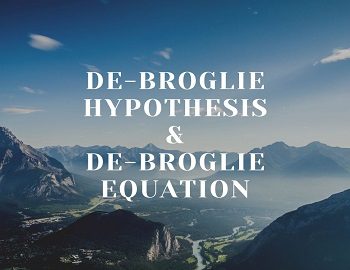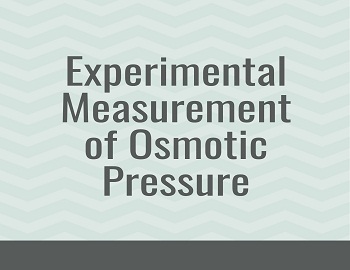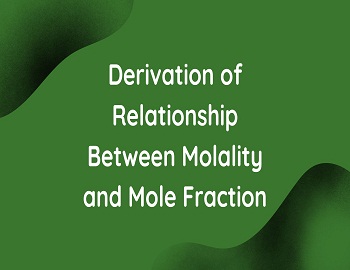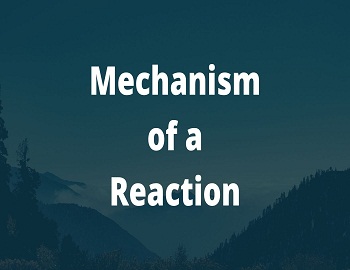Table of Contents
de-Broglie Hypothesis:
In 1905, Einstein reported that certain properties like photo-electric effect and black body radiations can be explained by considering the particle aspect of light. On the other hand, certain properties like Reflection, interference and diffraction can be explained by considering the wave aspect of light. Thus light posses dualism or double character. In 1924, Louis de-Broglie put forward his hypothesis that the concept of dualism of light should be extended to all matter particles. Thus according to him “All matter particles in motion possess dualism i.e. particle character as well as wave character”.
He introduced his famous equation called a de-Broglie equation. It is as under-
λ = h / mV or λ = h / P
h = Plank’s constant = 6.625 X 10-34 Js
m = mass of matter particle
V = velocity of matter particle
P = moment of matter particle
Derivation of de-Broglie equation:
This relationship is derived by combining the Einstein and Max Plank’s mass energy relationships.
According to Einstein’s equation, the mass energy relation is-
E = mc2 ……………..(i)
Where ‘m‘ is the mass of particle and ‘c‘ is the velocity of light
According to Plank’s theory, the energy ‘E‘ of a photon is related to its frequency ‘ν‘ by the following relation-
E = hν …………….(ii)
Where ‘h’ is Plank’s constant
Combining (i) and (ii) equations-
hν = mc2 …………..(iii)
But c = νλ or
ν = c/λ ………………(iv)
Using (iii) and (iv) equation,
hc/λ = mc2
h/λ = mc or λ = h/mc
This equation is valid for a photon. de-Broglie also suggested that on substituting the mass of the particle ‘m‘ and its velocity of particle ‘V‘ the above equation can also be then applied to other material particles and the equation becomes-
λ = h/mV = h/P, where ‘P‘ is the momentum of the object.
This equation is called de-Broglie equation. From this equation, it is clear that wavelength of material objects-
λ ∝ 1 / Momentum associated with them
The evidences in favour of particle nature as well as wave nature have been proposed separately. An electron has all the characteristic of a particle, i.e., mass, velocity, energy and also produces scintillation when strikes ZnS screen and the scintillation is localized like a particle.
However, Davison and Germer in 1927 performed a diffraction experiment which has proved the wave nature of the electron. Thus, it is concluded that particle like wave possess dual nature.
Significance of de-Broglie equation:
The de-Broglie equation, which proves the dual nature of matter, is significant only for microscopic objects. For large bodies, the wavelengths associated are very small and cannot be measured. Hence, these bodies are said to have no wavelengths. Thus, any material body in motion can have wavelength but it is measurable or significant only for microscopic objects like electrons, protons, atoms or molecules. Let us explain the applications of the de-Broglie equation by considering it for an electron and a very-very small but macroscopic object like tiny cricket ball i.e.,
(i) The wavelength associated with an electron of mass 9.1 X 10-31 kg and moving with a velocity of the light 108 m/sec is-
λ = h/mV = 6.635 X 10-34 kg m2 sec-1/(9.1 X 10-31 kg) X (108 m/sec) = 7.28 X 10-10 m
(ii) The wavelength is associated with a cricket ball having weight 10 gm and moving with the same velocity of light, then for electron-
λ = h/mV = 6.635 X 10-34 kg m2 sec-1/(10-3kg) X (108m sec-1) = 6.63 X 10-38 m. It is practically 1mm usually.
Hence, the wavelength associated with cricket ball is practically immeasurable and is very-very small than moving electron.









Comments (No)